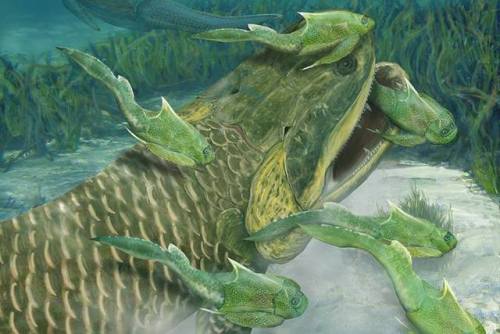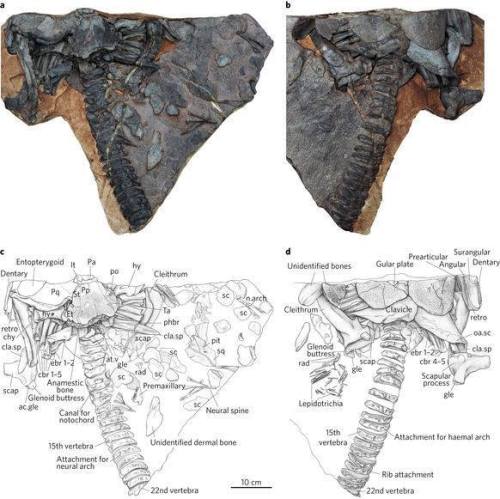HONGYU CHOWI – A PUZZLE PIECE THAT DOESN’T FITThe very first organisms to pioneer the transition fro
HONGYU CHOWI – A PUZZLE PIECE THAT DOESN’T FITThe very first organisms to pioneer the transition from ocean-based to land-based life would have had to have made some very drastic changes to their morphology and physiology in order to breathe, feed, reproduce and survive. The journey is thought to have started with lobe-finned fish, a group of boney fish that split with ray-finned fish during the Ordovician. Lobe-finned fish (Sarcopterygii) are distinguished from their sister group by the single bone that is found in the fleshy lobed fins that they possess. Whereas, in ray-finned species (actinopterygians), the fins comprised of multiples bones radiating out from the body, with a webbed covering. The fins of lobe-finned fish are the structures that eventually led to the tetrapod, or four-limbed, anatomy present in all reptile, amphibian, avian and mammalian organisms present today. However, numerous stages of anatomical adaptation, from marine to amphibious to terrestrial, had to occur before life could thrive on land. Examples of these can be found in the fossil record from the Devonian to the Carboniferous periods.To date, majority of the fossil evidence supports the monophyletic evolution of tetrapods, meaning that the four-limbed trait evolved only once, and all tetrapods arose from a single ancestor. A new paper in the journal Nature Ecology and Evolution has challenged this notion as it presents evidence of a species belonging to a sister group of the tetrapod ancestors, that possessed traits of tetrapods as well as those of rhizodonts, a group of fish that are separate from the tetrapod lineage. This suggests convergent evolution or homoplasy, whereby a certain trait that may be a beneficial adaption to an organism can arise in independent populations of different organisms. An example of this would be the wings of bats and birds. Though structurally different and in two very different taxa, they arose independently and function in the same way. Similarly, the lobe-finned species Hongyu chowi, excavated from a quarry in China, displayed traits analogous to those found in tetrapods, such as a shoulder girdle and gill skeleton. This finding may question the monophyly of the tetrapod group, suggesting that multiple taxa may have developed the 4-limbed trait and any of these could have contributed to the proliferation of this trait in all vertebrates. Researchers also believe, however that it could simply mean that rhizodonts are more closely related to tetrapod ancestors than previously thought, and these traits are shared rather than convergent. Whatever the case, this study does revise the discussion of the monophytic evolution of tetrapods and raises important points on the diversity and diversification of our lobe-finned ancestors and their relatives.KR.References and Further Reading:Zhu, M., Ahlberg, P.E., Zhao, W.J. and Jia, L.T., 2017. A Devonian tetrapod-like fish reveals substantial parallelism in stem tetrapod evolution. Nature Ecology & Evolution.http://bit.ly/2xi2AJRhttp://bit.ly/2iphGFChttp://bit.ly/2gD9dfZ -- source link
Tumblr Blog : the-earth-story.com
#science#research#evolution#tetrapod#fossil#geology#fossilfriday#biology#devonian

